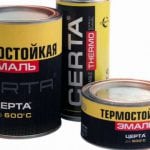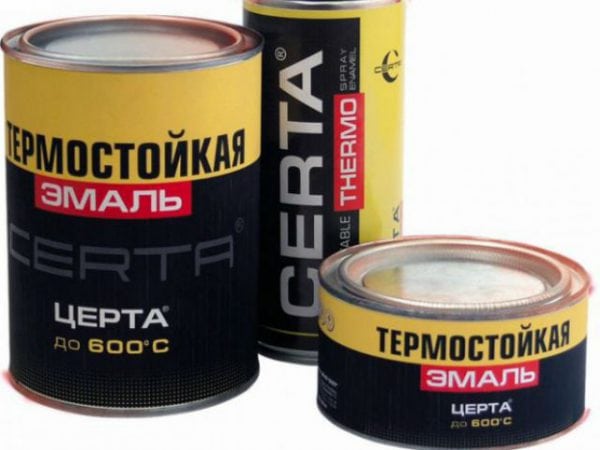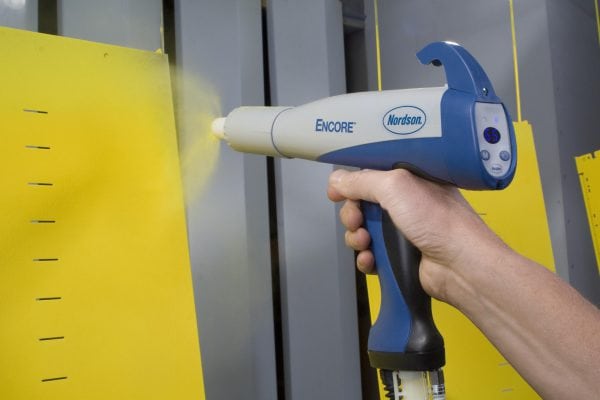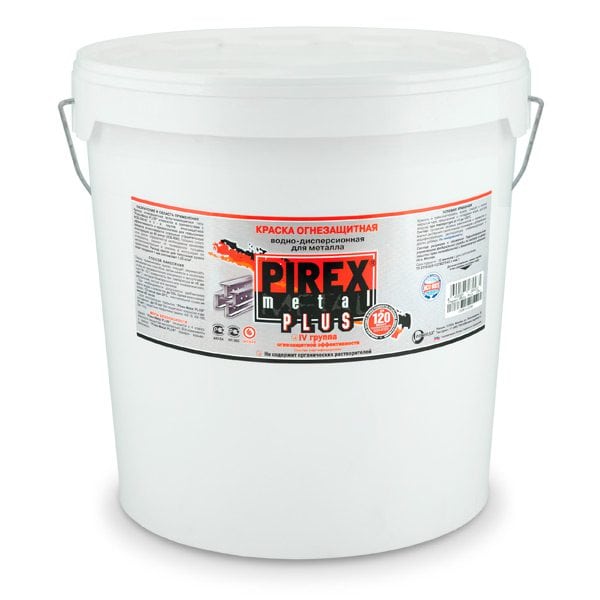Why do we need heat-resistant paint for metal? For painting any surfaces that are often or constantly exposed to high temperatures. Substances that have a high resistance to thermal effects, mainly paint metal structures subjected to heat:
- heating batteries;
- stoves and heating boilers;
- fireplaces (stone and brick, including);
- heating pipes;
- barbecues, grillers, barbecue shops.
Heat-resistant paint has found wide application in industrial production:
- automotive industry;
- machine tool industry;
- gasification systems;
- aircraft building, engine building;
- protect tanks for storing liquefied gas;
- roofing materials, fences and other types of metal profiles.
Heat-resistant paint has a composition different from other coloring agents. Non-heat-resistant solutions can withstand temperatures as high as +80 degrees.After that, the coating simply cracks and peels off. And these special materials can tolerate a heating temperature of more than 400 degrees without loss of protective properties and qualities.
to contents ↑Specifications
Enamel (paint) with heat resistance must meet the following reliability characteristics:
- electrical insulation protection;
- high abrasion resistance;
- immunity to a sharp change in temperature;
- corrosion protection;
- strength but ductility;
- environmental friendliness;
- increased adhesion;
- ease of processing;
- chemical and physical inertness, including technical oils, gasoline.
You can buy enamel or paint with such properties in a specialized store of paints and varnishes. But to make a special heat-resistant coloring solution with your own hands is also acceptable. How to achieve this? What substances to use?
to contents ↑Paint composition
First, take a look at the composition of heat-resistant solutions. It is different, and is selected based on the operating conditions of the painted devices. That is, the basic composition depends on the height of those temperatures to which the materials will be exposed.
Composition - the basis:
- Acrylic and alkyd resins. Operational temperature maximum - up to +100 degrees. They are used for metal structures for domestic use. A zinc phosphate mixture can be added to the paint enamel. Combined with epoxy primer.
- Epoxy resins. Temperature maximum - up to +200 degrees.
- Ethyl silicate and epoxy ester resins. Enamel with such a base is used at temperature conditions up to +400 degrees. An admixture of metal powder is allowed.
- Silicone resins - heat resistance of the paint - up to +650 degrees.
- Composition with composites and heat-resistant glass - up to 1000 degrees of heating.
Additional substances add and enhance other protective properties of the coating. The composition also includes solvents, pigments, silicon, organic varnishes, and more.
Again, the ability to use on various types of metal surfaces depends on the quality of the mixture.We try to make such an enamel with our own hands.
to contents ↑Self-made heat-resistant mixture
If you conceived do it yourself fireplace, barbecue or heating system in the house, you can try to prepare a heat-resistant mixture at home.
The easiest option is to use liquid glass and aluminum powder. Such coverage will last about five years. We draw attention to the fact that during the first flooding after staining, strong smoke is observed. For safety reasons, this should be done outdoors.
In a similar way you can get the so-called "silverfish". We get heat-resistant varnish and strengthen the composition with finely dispersed aluminum powder. After mixing, the solution will acquire a rich silver tint. Serebryanka is not afraid of high temperatures, calmly withstands up to +350 degrees. It has anti-corrosion properties, applicable on almost all types of metallic and non-metallic surfaces.
to contents ↑Staining technique
Heat-resistant paint for metal is applied in the same way as other paint solutions. Multilayer processing with mandatory intervals for complete drying between layers is recommended. It is required to apply the mixture in a thin layer, evenly distributing the enamel (paint) over the entire surface.
But before painting, you must do the following:
- thorough cleaning of the surface (removal of rust, dust, dirt, grease, old protective coating, scale);
- degreasing of the surface (solvent, xylene or acetone).
Then you can immediately proceed to staining. Traditional painting tools are used: brushes, roller, spray.
Some heat-resistant paints are sold in bottles with a built-in sprayer, which is very convenient to use, including for economical consumption. Information on recommended working conditions can be found in the instructions for use of the product. During work, personal protective measures and fire safety should be observed: gloves, mask, do not work near open flames.
Heat-resistant paints and varnishes provide reliable protection of metallic and non-metallic surfaces from constant high-temperature influence and other influences. And this, in turn, helps to extend the period of safe use of products and structures.







